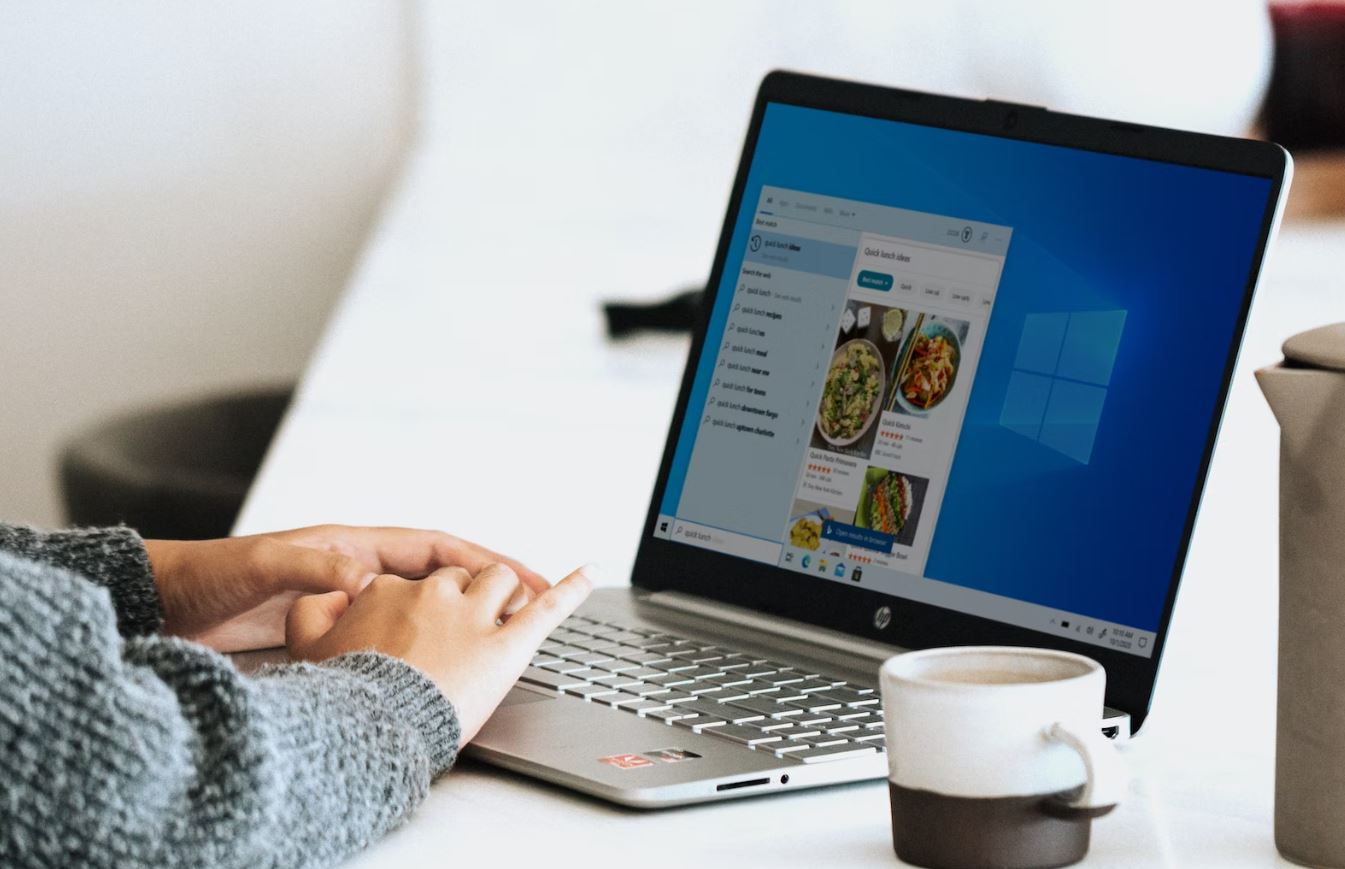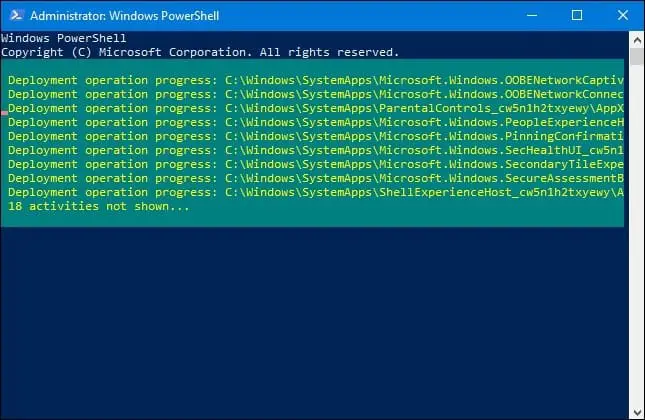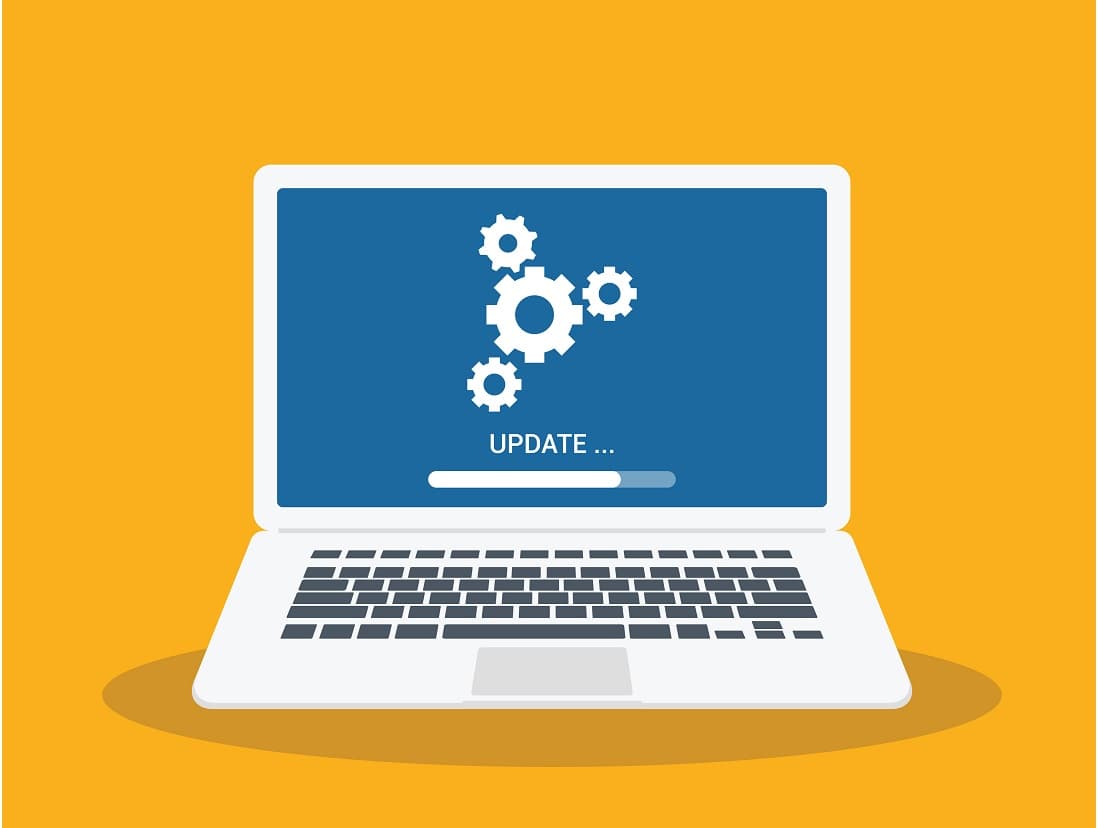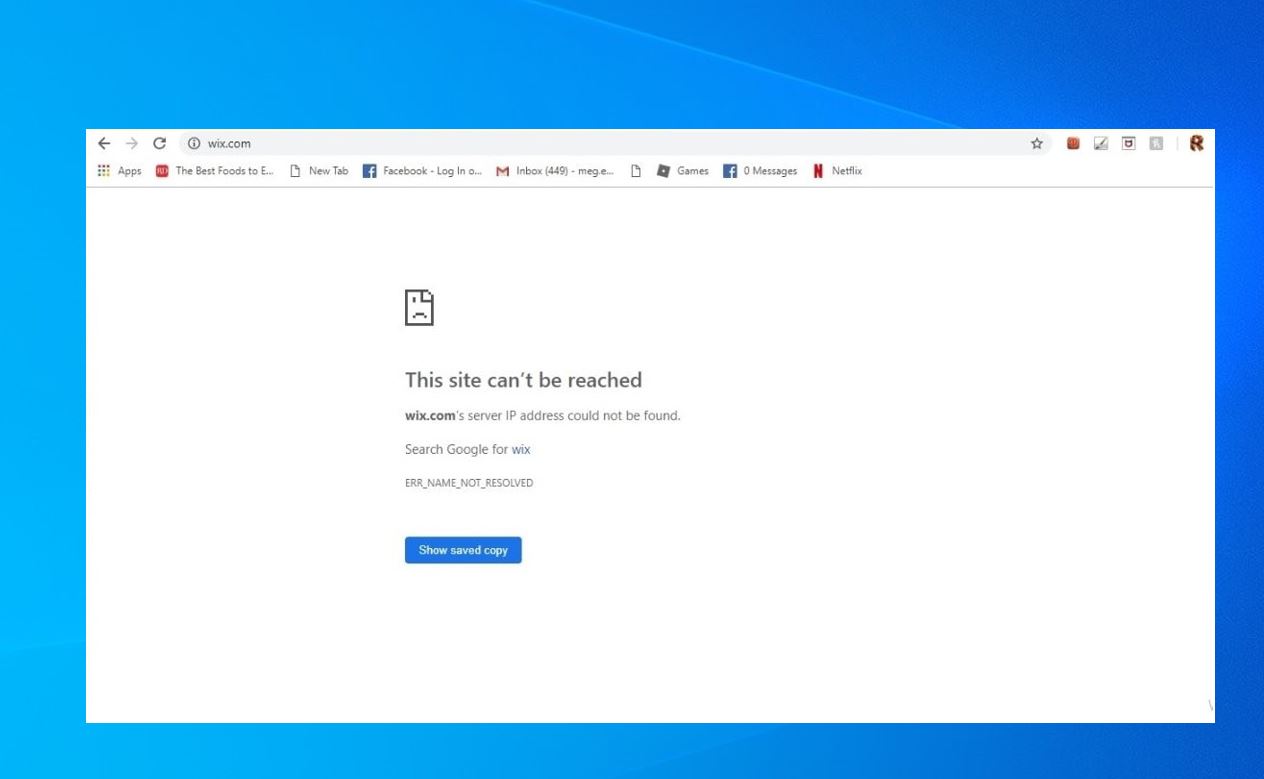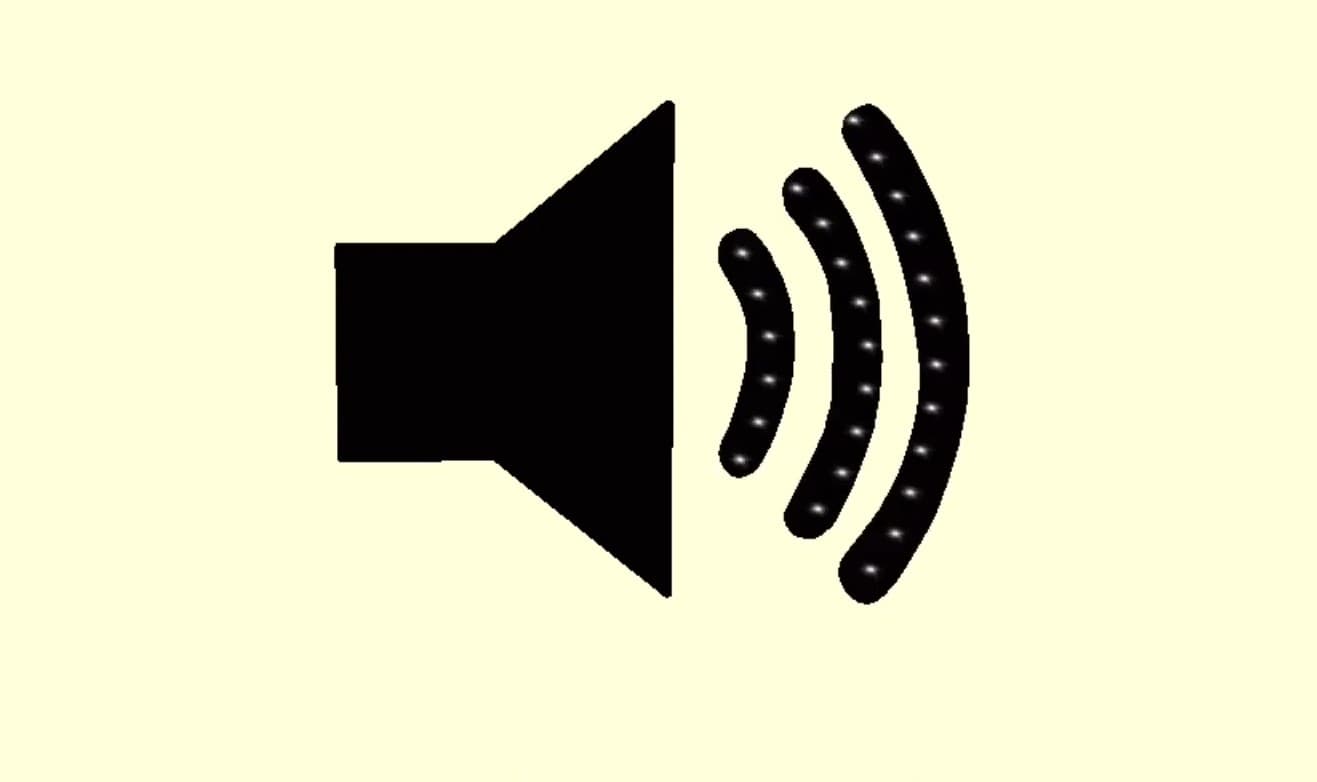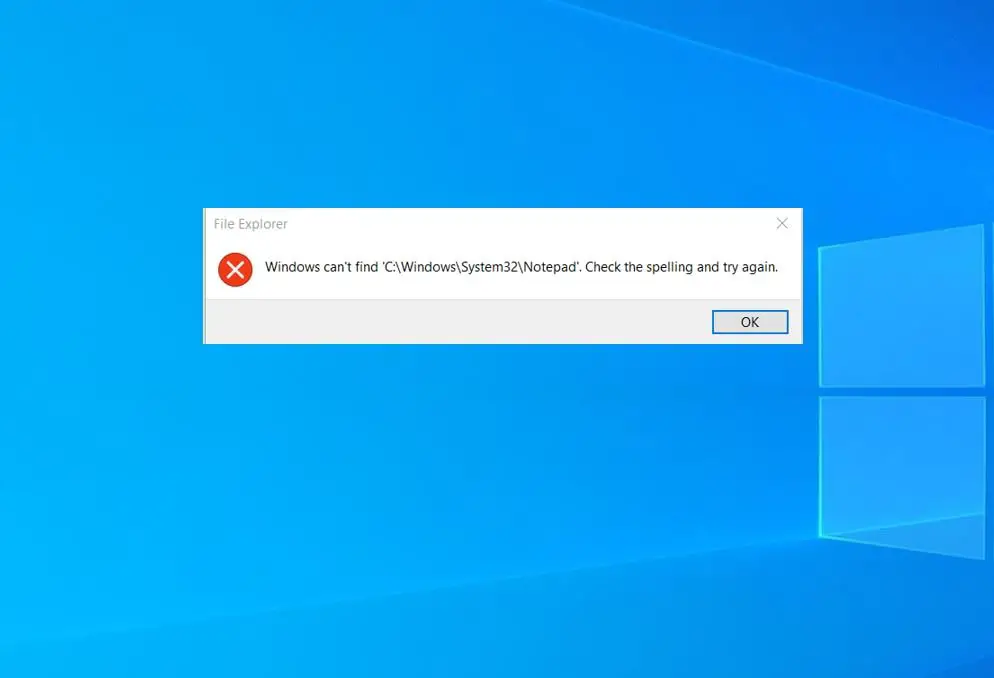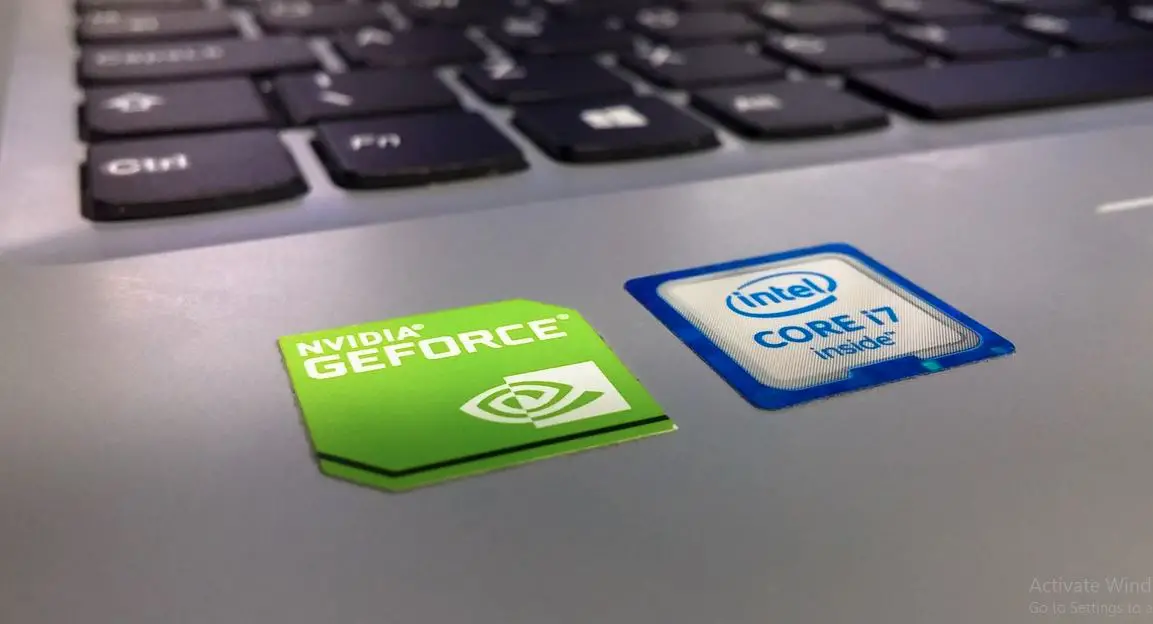If you are a Windows 10 user, you may have encountered a frustrating issue, Start menu is not working properly. You may not be able to open it at all, or it may freeze up and become unresponsive. Several users report, start menu not working after update, or getting “Critical error”. This makes it difficult to access apps, settings, and files. Fortunately, there are some possible solutions to fix this issue. This article explores common reasons why Windows 10 start menu not opening or working and how to troubleshoot the problem using different methods.
Contents
Several possible reasons why start menu not working after Update, corrupted system files, software conflicts, problems with user profiles, or registry errors are common.
- If for some reason essential system files are corrupted, it can cause the Start menu to malfunction. This can occur due to software conflicts, improper shutdowns, or malware.
- Sometimes, third-party applications or recent updates may conflict with the Start menu, leading to its unresponsiveness.
- An issue with the user profile can also affect the Start menu. This could be due to a corrupted user profile or misconfigurations.
- The database responsible for storing Start menu shortcuts and configurations may become corrupted, causing the Start menu to fail.
- Again problems with Start menu process, or system glitches are the reasons why the Windows 10 start menu not opening.
Yes, this is the very first thing you need to do if start menu not working or won’t open on your computer. Just right-click on the taskbar and select the task manager option. Under the process tab look for the process called “start” right click on it and select endtask.
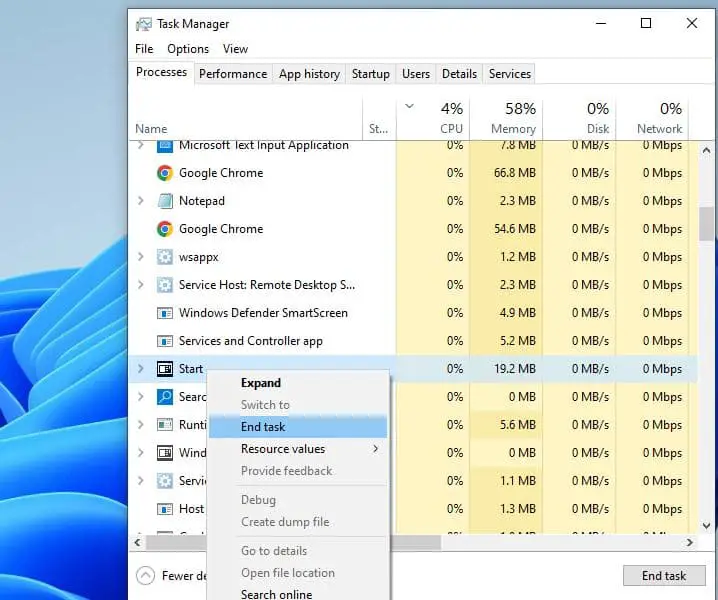
- Now move to the Details tab, scroll down to locate startmenuExperienceHost, again right-click on it, and select endtask.
- Don’t worry, this services (process) automatically restart in the background.
- In addition under the process tab look for Windows Explorer, right-click on it select the restart option.
Restarting the Windows Explorer process effectively refreshes the user interface, resolving issues caused by temporary glitches or conflicts. Now check if the start menu working as expected or not.
Restart Your Computer
Sometimes, the issue with the Start menu occurs due to a temporary glitch, and a simple restart can work wonders. Restarting your computer clears temporary system issues such as memory leaks, effectively resetting various system components, including the Start menu, and potentially resolving any temporary glitches that may be causing it to malfunction.
- Simply click on the “Start” menu, select the power icon, and choose “Restart” from the options.
- If the start Menu not open, Right click on start menu select shutdown or signout then click on the restart option.
- Wait for your computer to restart, and check if the Start menu is functioning properly afterward.
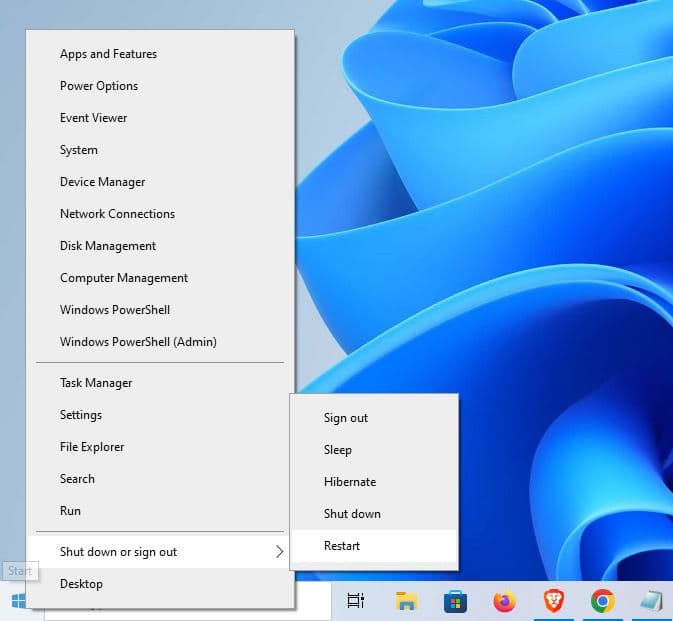
Reset the Start Menu
Resetting the Start menu layout and settings can help resolve issues caused by corrupted or misconfigured elements. This process reinstalls the Start menu components, effectively resetting it to its default state.
Open PowerShell as an administrator by searching for “PowerShell” in the Start menu, right-clicking on it, and selecting “Run as administrator.”
Now copy and paste the following command, and press enter key to execute.
Get-AppXPackage -AllUsers |Foreach{Add-AppxPackage -DisableDevelopmentMode -Register “$($_.InstallLocation)AppXManifest.xml”}
Wait for the command to execute, and restart your computer. By doing so, you can eliminate any problematic configurations or settings that may be causing the Start menu to malfunction, restoring its normal operation.
Check for Corrupt User Profile
Again User profile corruption can lead to various issues, including problems with the Start menu. Let’s create a new user account and check the start menu with the new profile, this help determine if the issue is specific to your user profile.
- Press Windows key + I to open the settings app
- Go to “Accounts,” then “Family & other users”.
- Under “Other users,” click “Add someone else to this PC” and follow the prompts to create a new user account.
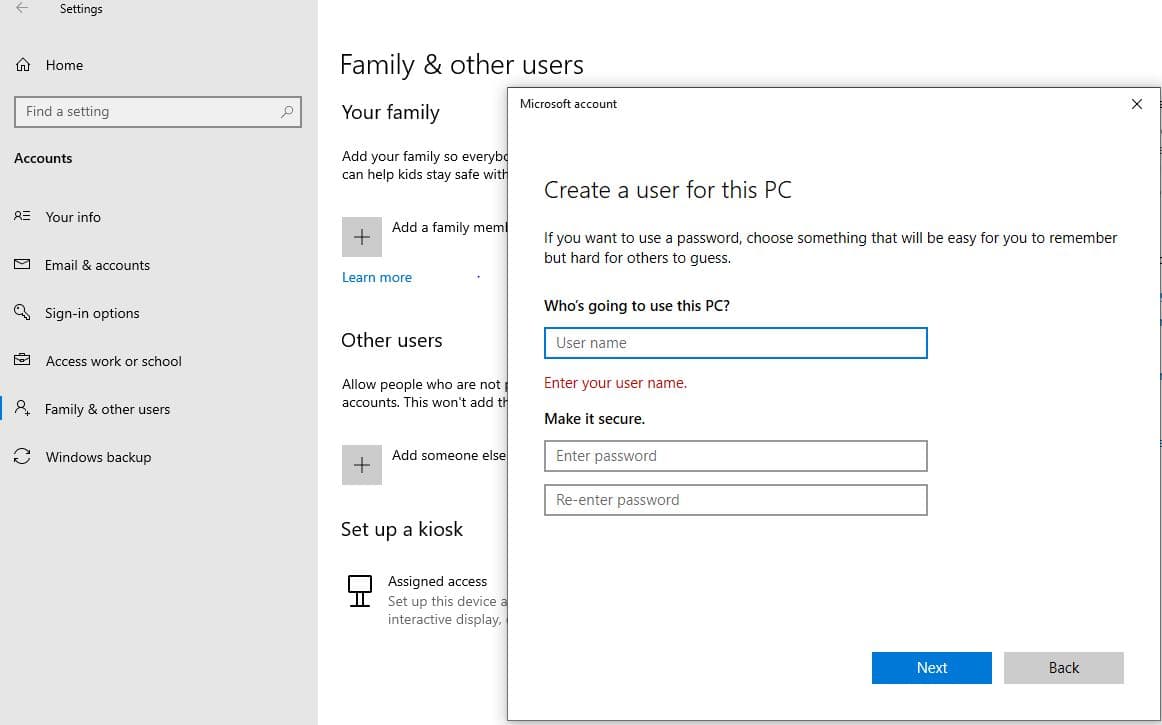
- Now log off from the current user account and log into the new user account.
- The Start menu should now work perfectly with the new user account.
If the Start menu works fine in the new account, it suggests that your original profile may be corrupted, prompting you to take appropriate actions such as transferring files or fixing the original profile.
You need to transfer your settings to the new account by following the given series of steps.
- Open the Control panel Click System applet.
- Select “Advanced system settings”
- Switch to the Advanced tab
- Hit the Settings button under “User Profiles”.
- Now, select the new account and click Copy To button.
Check for Windows Updates
Keeping your system up to date with the latest Windows updates is crucial for maintaining system stability and security. Latest Windows updates often include bug fixes and performance improvements, including patches to address issues with the Start menu.
- Open the Settings app, go to “Update & Security,” and click on “Windows Update.”
- Select “Check for updates” and follow the prompts to download and install any available updates.
- Once done you need to restart your computer to apply the changes.
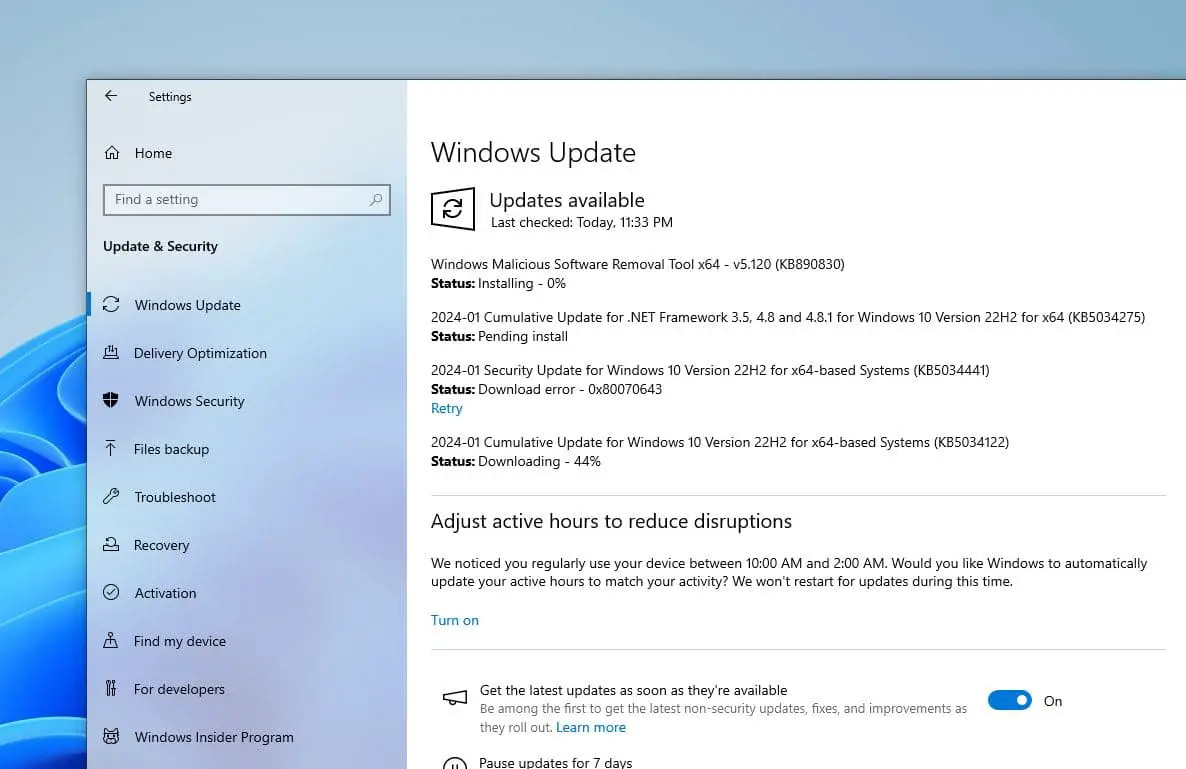
By regularly checking for and installing updates, you ensure that your system has the latest enhancements and fixes.
Find and repair corrupted Windows files
Sometimes corrupted system files cause this issue in which results start menu becomes unresponsive, Windows 10 start menu Stops working. You can run a built-in System File Checker (SFC) tool and DISM command that scans for and repairs corrupted system files. These tools also help maintain the integrity of the operating system and ensure smooth performance.
- Open Command Prompt as an administrator by searching for “cmd” in the Start menu, right-clicking on “Command Prompt,” and selecting “Run as administrator.”
- Then, type the command “sfc /scannow” and press Enter, Wait for the scan to complete
- Next run DISM command to scan and repair the system image, this performs advanced scan and help repair system files when sfc fails to complete the task.
DISM /Online /Cleanup-Image /RestoreHealth
- Let both tools scan complete 100%, and restart your computer.
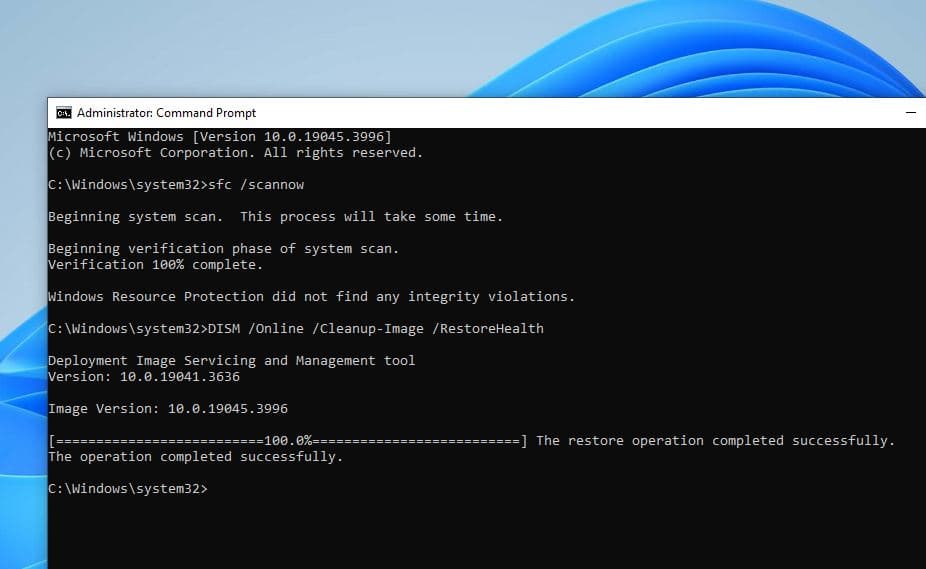
If the Start menu is malfunctioning due to corrupted or missing system files, running an SFC scan can help restore its functionality by repairing the damaged files.
Check Application Identity Service running
The Application Identity is a service in Windows 10 that decides which applications are allowed or not allowed to function on your computer. If for any reason, this service is stuck or stops this will cause Windows apps include the Start menu stop working.
- Press Windows + R, type “services.msc” click OK.
- scroll down and find out the Application Identity service.
- Once you locate it, do right-click on it and select Start.
- Finally, restart the PC and the Start Menu should be running up flawlessly.
In addition, Conflicts with third-party applications or utilities can interfere with the proper functioning of the Start menu. Uninstalling recently installed third-party software eliminates potential conflicts, allowing you to identify the culprit causing the issue.
If the start menu not working problem started after a recent change, you can perform System restore to revert your system to a previous stable state. This effectively undo recent changes that may have caused the Start menu issue.
Also, Read

